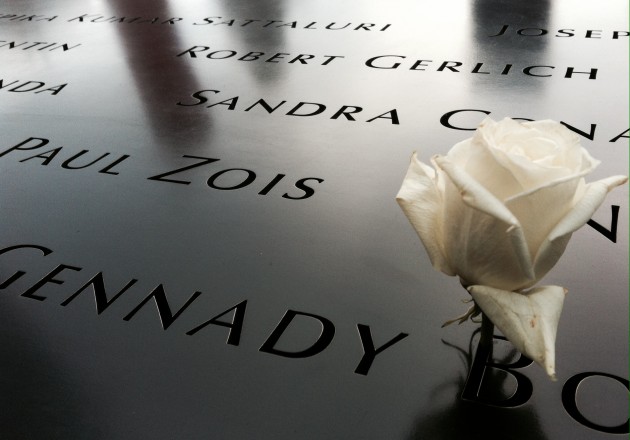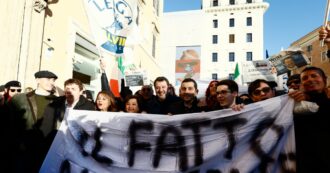Is this happening?, mi chiedevo, ‘Sta succedendo davvero?’. E’ stato devastante, it was so scary, ho avuto così paura. Entri, le parole dei sopravvissuti proiettate sulla parete, e sembra Gaza. Aleppo. Sembra Sarajevo, Grozny, Baghdad, sembra ogni guerra di ogni tempo. E invece è New York, Stati Uniti d’America, è il museo dell’Undici Settembre, costruito nelle fondamenta delle Torri Gemelle. Tra i pezzi di quello che ne rimane: un pilastro, un moncone di antenna, un camion dei pompieri. Sembra la Siria. Tra le macerie una scarpa, il piede ancora dentro.
Solo che non è la Siria. Non sarà mai la Siria. Perché stanza a stanza, minuto per minuto, il museo ripercorre quello che è accaduto, foto, suoni, video, testimonianze da ogni angolazione possibile. Infili delle cuffie, e ascolti la segreteria telefonica del capitano Patrick J. Brown, i messaggi lasciati dalle amiche, dagli amici, certi che fosse corso verso l’inferno, invece che tenersene a distanza – certi che fosse lì a soccorrere i feriti del primo crollo. No, non sarà mai la Siria. Dei nostri morti conosciamo tutto. I nomi. I volti, la vita. I siriani non sono più neppure un numero – l’Onu ha deciso che aggiornare il conto dei morti era troppo complesso, le fonti troppo inaffidabili: e così, invece di fermare la guerra, a gennaio ha fermato il conto dei morti.
La Siria, o magari la Libia. Che è bombardata da settimane, e nessuno sa da chi. Nel senso – nessuno sa chi c’è sugli aerei. Sta succedendo davvero.
Per chi vive in Medio Oriente, per chi vive ogni giorno sulla propria pelle, e spesso sulla propria testa, le conseguenze dell’Undici Settembre, visitare Ground Zero non è semplice. Perché il museo è letteralmente sull’Undici Settembre: non un minuto prima, non un minuto dopo. Non c’è niente che aiuti a comprendere perché è accaduto, non c’è niente sui paesi di origine dei terroristi. I loro volti, la loro vita. Niente, soprattutto, sulla reazione, la risposta all’attacco. Se ha avuto senso. Se è stata efficace. Fuori, davanti alle fontane quadrate che sono le impronte delle Torri Gemelle, i nomi delle vittime incisi sui bordi, i turisti sorridono e si scattano un selfie.
Dai quadrati esterni, l’acqua precipita in un quadrato interno metafora dell’abisso, della ferita che non si rimargina. Le vittime, spiega una madre al figlio, il dolore senza fine. O forse le vittime delle vittime, e le vittime delle vittime delle vittime, la guerra senza fine, oggi che alla stanza su Bin Laden possiamo già aggiungere una stanza su al-Baghdadi.
In foto: [New York, Ground Zero] I nomi delle vittime sui bordi del memoriale dell’Undici Settembre, all’ombra dei grattacieli rimasti
_______________________________________________________
Is this really happening?, I was asking to myself, It was devastating – It was so scary. You get in, the words of the survivors projected on the wall, and it looks like Gaza. Aleppo. It looks like Sarajevo, Grozny, Baghdad, it looks like every war from every time. And instead it’s New York, United States of America, it’s the 9/11 museum, built in the basement of the Twin Towers. Between the pieces of what’s left of them: a pillar, a stump of an antenna, a fire truck. It looks like Syria. Between the rubble a shoe, the foot still inside.
But it isn’t Syria. It will never be Syria. Since room by room, minute by minute, the museum goes back over what happened, pictures, sounds, videos, eye-witness accounts from every possible angle. You wear the headphones, and you listen to the voicemail of captain Patrick J. Brown, the messages from his friends, sure that he would have run inside the hell, rather that keep himself at a safe distance – that he would have run to the rescue of the wounded of the first collapse. No, it will never be Syria. Of our dead we know everything. The names. Their faces, their life. Syrians aren’t even anymore a number – the UN decided that updating the death toll was too complex, sources were unreliable: and so, instead of stopping the war, in January they stopped counting the dead.
Syria, or Libya. That is being under airstrikes for weeks, and no one knows whence.
I mean – no one knows who is on the jets.
It’s really happening.
For someone who lives in the Middle East, for someone who lives every day the consequences of 9/11, and often over his own head, visiting Ground Zero isn’t easy. Because the museum is literally about 9/11: nothing about a minute before, nothing about a minute later. There isn’t anything that helps understanding why this did happen, there isn’t anything on the countries the terrorists came from. Their faces, their life. There’s nothing, especially, on the reaction, the response to the attack. If it was effective. If it had any meaning at all. Outside, in front of the square fountains that echo the footprints of the Twin Towers, the names of the victims engraved on the edges, tourists smile and take a selfie.
From the outer squares, the water falls into inner squares, metaphor of the abyss, of wounds that don’t heal. The victims, a mother explains to her child, the endless pain. Or maybe the victims of the victims, and the victims of the victims of the victims, the endless war, today that next to the room on Bin Laden we could already add a new room on al-Baghdadi.
Articolo Precedente
Giappone, le elezioni anticipate sono un referendum sulla ‘Abenomics’

Articolo Successivo
Le torture della Cia e le irresponsabilità per questi crimini








